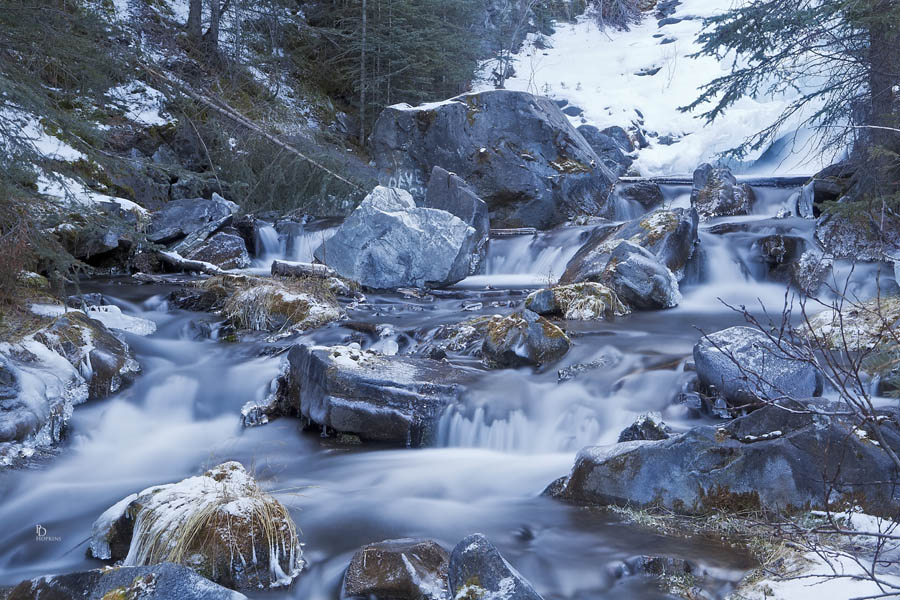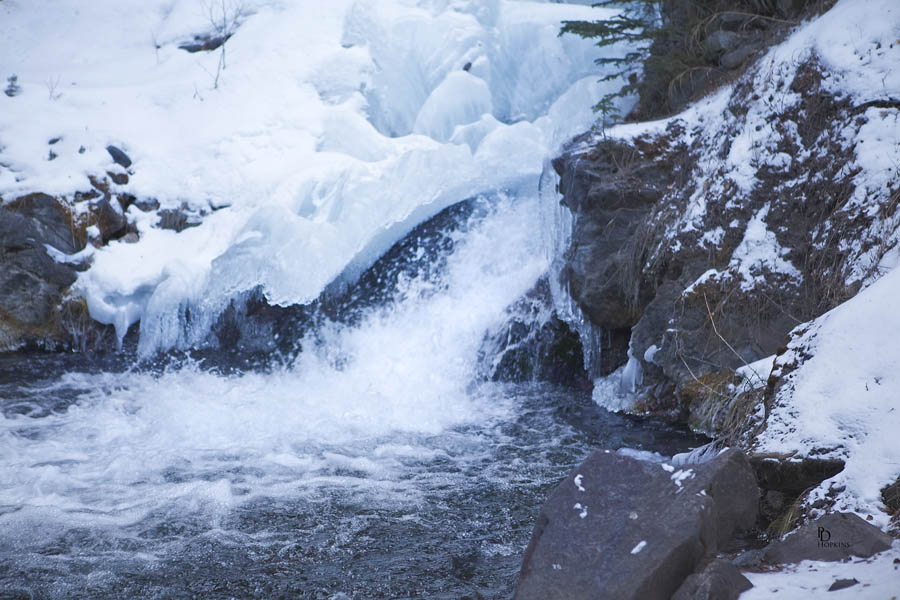Today, I got out once again with son-in-law Andrew to take some pictures at a small waterfall on Canmore Creek, not far from home. It’s wise to take advantage of warmer days at this time of year; it’s much more pleasant shooting winter scenes without frozen fingers. Today was a great day and because recent weather has been fairly mild, Canmore Creek is still flowing, allowing us to get some shots of snow, ice and water.
I chose to do long exposures, creating a soft, dreamy look to the flowing water. Stationary surroundings are very sharp by comparison, creating a strong contrast between them and the moving water. I was seeking to accentuate that contrast and have purposely exaggerated the “softness” of the water flow.

I begin with a wide angle view of the waterfall, above. I used a small aperture, f22 and a 2-stop neutral density filter to achieve the very long exposure (20 sec.). This created the soft look to the water, which I left unchanged when I touched up the final image with Photoshop. I sharpened the entire image, and masked all but the rocks, grass and ice that I wanted to stand out more sharply. I also did some localized colour saturation on those same items to further highlight them.
For this next shot below, I moved up the path into the area shown in the upper right corner of the wide angle view. I zeroed in on a small cascade and used the same technique to capture this very ethereal look.

I achieved the contrast I was seeking between the softness of the flowing water and the sharpness of its surroundings. The close-in view also gives a better look at the detail of the ice on the rocks and the texture in the snow.
For purposes of comparison, I’ve included a much faster exposure (1/250 sec.), for a more “real” view of the falls. I would have preferred an even faster exposure to better “freeze” the action but this area was quite shaded and it was difficult to go much beyond this speed.

To achieve high shutter speeds in subdued lighting requires compromises. In this case, I increased the sensor sensitivity to light to ISO 1600 and widened the aperture to f2.8 to get a shutter speed of 1/250 sec. I could have increased the ISO setting further but doing so introduces “noise” to the image and I didn’t wish to go further down that path. At f2.8, the lens is wide open, admitting the most light possible. The trade-off with a large aperture is a diminished “depth of field”. In other words the depth into the picture that is in sharp focus is quite reduced. I focused on the churning water at the bottom of the cascade. You can see that the focus in that area is quite sharp but becomes less so in front and behind that part of the image. A flash would have helped; something I’ll try on a future occasion. The image I’ve posted is not what I would have liked but isn’t a bad compromise. It won’t get into the “favourites” file any time soon.

Beautiful photos, Peter.